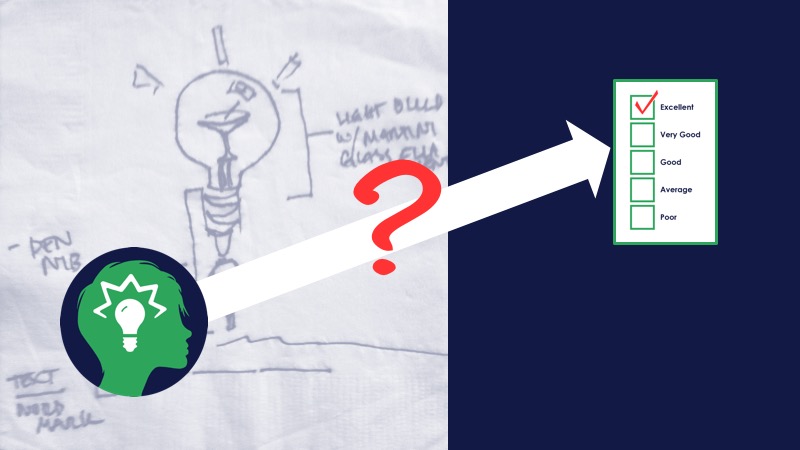5 Steps to an Effective Product Development Strategy

The first and arguably the hardest step in developing a product is generating the next “big idea.” But while you may love the idea, you have to ask yourself, “Will anyone else?” Great ideas—which turn into great products—seek to fill a void that the target market has—and may not be not aware they have. Ideally, your idea will revolutionize their life, from changing the way they communicate to how they conduct their business.
Consider these five steps from idea to launch for your new product initiatives.
Step 1: Get market feedback early and often
When you think you have a sellable idea, conducting market research is the first step in your product development strategy. This includes customer interviews, surveys, assessing comparable competitor products, and market analysis. During this research you want to assess your target market’s view on the product and if they understand your concept: What problems will you solve? What specific benefits will this product offer?
Your idea needs to be valuable, one that solves a problem through innovative techniques. But not all problems are ones that need to be solved. Keep your target audience in mind: If it doesn’t resonate with them you have to go back to the product development drawing board. Even if your product idea does resonate, it’s likely you’ll continue to look for ways to improve it. What can make the product better that hasn’t been added? Is there something that detracts from the overall purpose of the product?
Product managers should test and validate the concept throughout the entirety of product development.
Step 2: Concept Drawings, Renderings, & Prototypes
Once your idea is validated in the market, next you’ll need to visualize one or more solutions. A 2D concept sketch or 3D rendering can help tremendously. A 2D sketch may include a basic outline of the design and its components or a full visualization, with labels and color. The 3D model gives product developers a more accurate visualization of what the product will look like because of its simulation abilities. The rendering is scalable, can add photorealistic shades, and help identify areas of effects and stress. Prior to prototyping, product developers can make adjustments that could result in costly mistakes during the product development stage.
Prototypes help ensure that the selected design is desirable and ready for production, as they help product developers understand the usability of the final version. There are different versions of prototypes, with some only demonstrating a certain feature or not necessarily using the same materials as the final version.
Because prototypes can be made as close to the final product, product developers can conduct functionality checks, select appropriate materials, and detect design mistakes. Again, this continues the constant re-evaluation necessary throughout product development that not only improves the product but also avoids mistakes that could be costly.
Step 3: Refining and Market Testing
If you have investors, it’s time to show them a prototype. It’s important to have them on board with the direction of the product, since they are the ones who are funding the project. If you are the sole funder, it’s still helpful to receive feedback from peers or coworkers to make sure the product idea is still feasible.
Consider also your branding and promotion plans—especially for products that will have your marketing message and logo embedded in the product.
Continue to gather insight with on-going market tests. When selecting an audience, vary the participants so you can determine which persona is the best fit for your initial efforts. Sometimes you may find that one unexpected group shows more interest in the product; these personas become your target when developing your marketing strategy. The target persona may even change your entire marketing approach.
Step 4: Pre-Launch
While some companies have success with a “big splash” launch, most will be better luck building momentum in the market with a pre-launch program.
The goal of a pre-launch is not to generate sales but generate interest. You’ll reach out to bloggers, bellwether customers, and other market influencers so you’ll have positive word of mouth on the day you go live. Be careful with this strategy though--your product must be fairly solid during pre-launch or you’ll find the influencers have little good to say about the product.
Perfecting your go-to-market tool set is another goal of pre-launch. Have you nailed your marketing message? Do your sales teams have the tools they need? Can you onboard clients quickly as well as convert them from the old version to the new with minimal hassle? Perfecting this tool is important to the success of your product. If your marketing plan fizzles, your product can, too.
Step 5: Launch
Congratulations! Your product is ready to be sold. The day of the launch is going to be both exciting and tiring. After it ends, it’s important to maintain the momentum that you generated prior to and on launch day. Continue your marketing efforts to maintain steady sales.
Many companies have dedicated teams to conduct launch and on-going promotional efforts, which means you are free to go back to brainstorming, beginning a new product development strategy to create the next great product.
What’s next?
Great ideas can result in great products. Some teams think only about developing the product—but you should look beyond the product to how it will be marketed, sold, and supported. Be sure to incorporate testing and validation into each step of your process.
